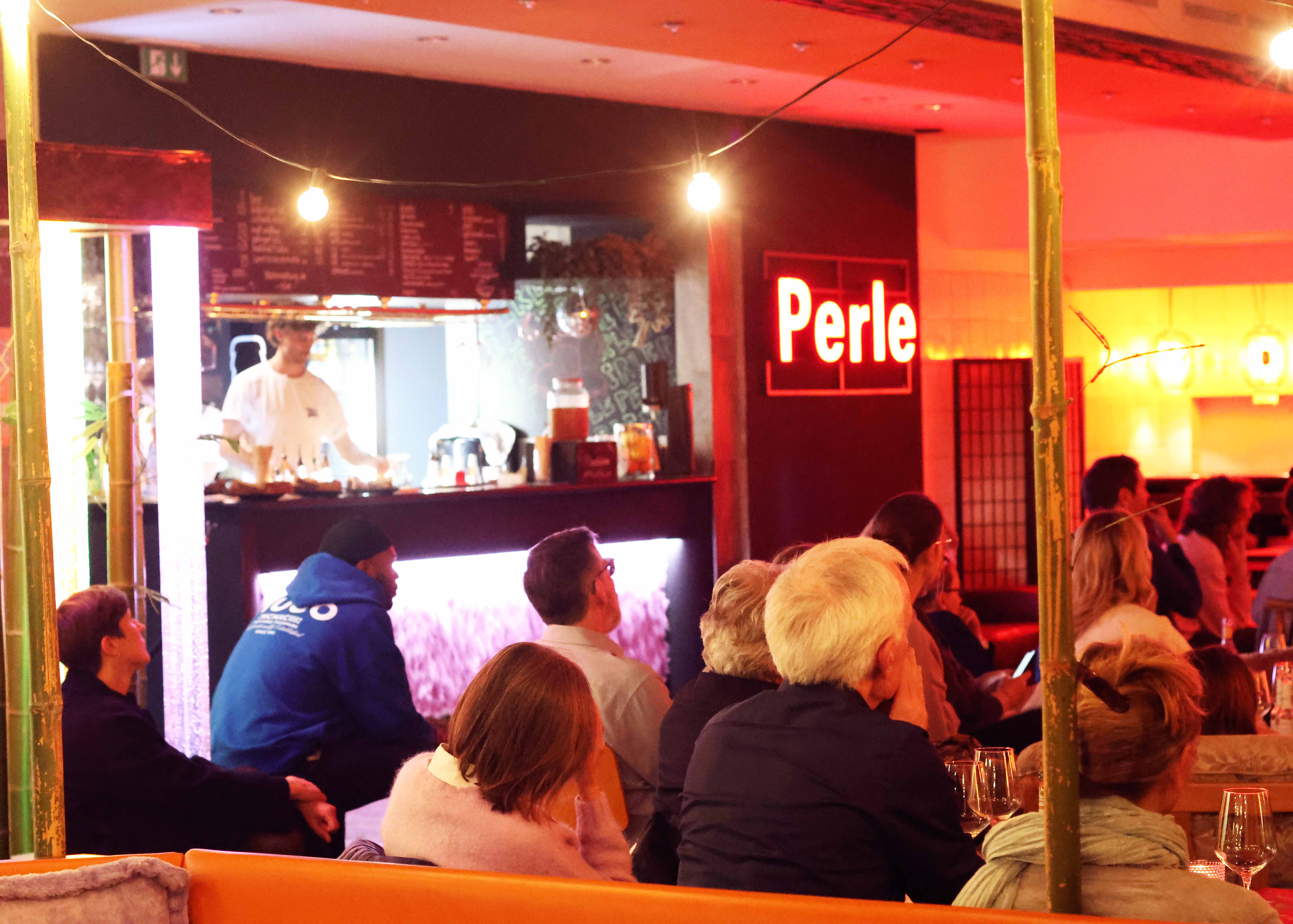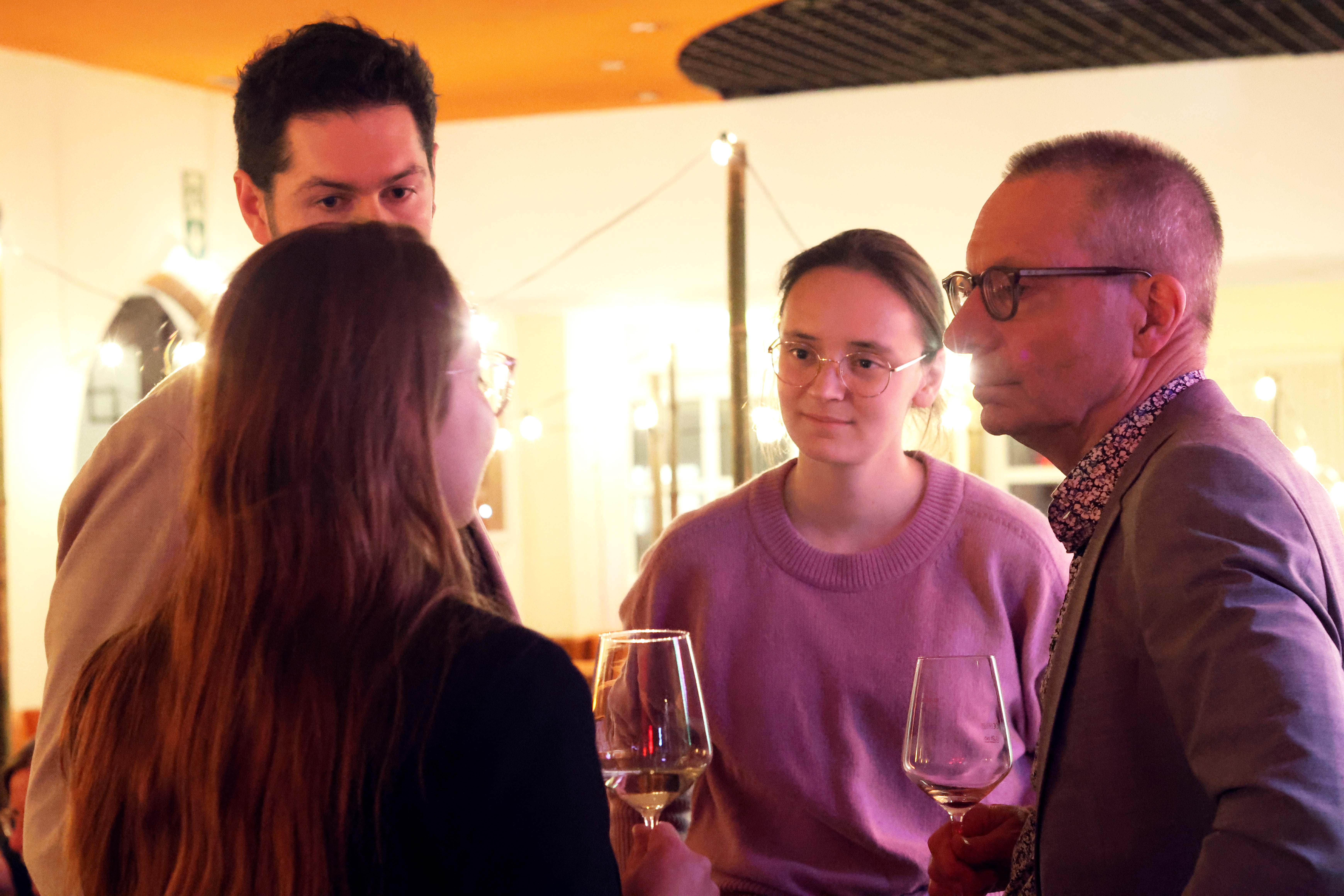![]() ELISABETH MERK
ELISABETH MERK
ANDREAS HOFER
MICHAEL BUHRS
MARKUS STENGER
Transformation
der Orte /
What’s your
program?
ABOUT
THIS
PANEL
Städte sind einem ständigen Wandel unterworfen, angetrieben von Standortentscheidungen, Umnutzungen und Zwischennutzungen. Diese Transformation prägt die Identität und den Wert eines Ortes neu. Standortentscheidungen sind der erste Schritt dieser Metamorphose. Leerstehende Bestandsimmobilien dienen als leere Leinwände, bereit für eine Umnutzung. Durch diese Veränderung erhalten diese Gebäude ein neues Leben und bereichern die umliegende Gemeinschaft. Die Kraft der Kunst kann als transformative Kraft wirken und zur Nachnutzung und Revitalisierung von Orten beitragen. Zwischennutzungen sind flüchtige, aber wirkungsvolle Überarbeitungen. Sie beleben temporär leerstehende Räume und dienen als Experimentierräume für neue Ideen. Die Gleichzeitigkeit von Funktionen, wie Wohnen, Arbeiten und Erholen, ist ein charakteristisches Merkmal dieser städtischen Metamorphose. Diese Mischung fördert die Urbanität und generiert einen Mehrwert, der die Lebensqualität in der Stadt verbessert. Kunst und Kultur sind Katalysatoren dieser Transformation. Sie schärfen das Bewusstsein für die Geschichte und Identität eines Ortes und eröffnet neue Perspektiven für seine Zukunft. Die Stadt von morgen ist eine sich ständig neu erfindende Stadt. Die Herausforderung besteht darin, diese Transformation auf eine Weise zu gestalten, die nachhaltig, inklusiv und vorteilhaft für alle Beteiligten ist. Die Zukunft der Stadtentwicklung liegt in der Integration von Innovation, Nachhaltigkeit, Partizipation und Kultur, um flexiblen, anpassungsfähigen und resilienten Räumen Vorrang zu geben. Diese Räume müssen den sich ständig ändernden Bedürfnissen und Umständen gerecht werden. Dabei kann die Kraft der Kunst eine zentrale Rolle spielen, um die Transformation voranzutreiben und Orte mit kulturellem Wert und Bedeutung zu schaffen.
—
Cities are subject to constant change, driven by location decisions, repurposing, and interim uses. This transformation shapes the identity and value of a place anew. Location decisions are the first step in this metamorphosis. Existing vacant buildings serve as blank canvases, ready for repurposing. Through this change, these buildings gain new life and enrich the surrounding community. The power of art can act as a transformative force and contribute to the reuse and revitalization of spaces. Interim uses are fleeting but effective revisions. They temporarily enliven vacant spaces and serve as testing grounds for new ideas. The simultaneity of functions, such as living, working, and recreation, is a characteristic feature of this urban metamorphosis. This mix promotes urbanity and generates added value that improves the quality of life in the city. Art and culture are catalysts for this transformation. They heighten awareness of the history and identity of a place and open up new perspectives for its future. The city of tomorrow is a constantly reinventing city. The challenge lies in shaping this transformation in a way that is sustainable, inclusive, and beneficial for all involved. The future of urban development lies in the integration of innovation, sustainability, participation, and culture to give priority to flexible, adaptable, and resilient spaces. These spaces must meet the constantly changing needs and circumstances. The power of art can play a central role in driving this transformation and creating places of cultural value and significance.













ABOUT
ELISABETH MERK
Prof. Dr. (Univ. Florenz) Elisabeth Merk, Architektin, ist seit 2007 Stadtbaurätin von München. Nach freiberuflicher Tätigkeit und einem weiterführenden Studium in Florenz war sie 1995-2000 in München und Regensburg verantwortlich für Stadtgestaltung, städtebauliche Denkmalpflege und Sonderprojekte. 2000-2005 leitete sie das Stadtplanungsamt in Halle/Saale. Elisabeth Merk war 2005-2007 Professorin an der HfT Stuttgart und ist dort seit 2009 Honorarprofessorin. 2020 hat sie eine Honorarprofessur an der Technischen Universität München erhalten. Von 2015 bis 2022 war sie Präsidentin der Deutschen Akademie für Städtebau und Landesplanung. Sie ist Beisitzerin im Bau- und Verkehrsausschuss des Dt. Städtetages und Mitglied des Bau- und Planungsausschusses des Bayer. Städtetages, des UNESCO Netzwerkes Conservation of Modern Architecture and Integrated Territorial Urban Conservation, des ICOMOS, des Vorstands für nationale Stadtentwicklungspolitik sowie im Beirat der Bundesstiftung Baukultur und des Deutschen Werkbundes.
—
Prof. Dr. (University of Florence) Elisabeth Merk, architect, has served as the City of Munich’s Planning Director since 2007 and was reelected in 2018 for the third time. From 1988 to 1994, she worked in architecture and monument protection. From 1995 to 2000, she contributed to urban planning, urban monument conservation, and special projects in Munich and Regensburg. She headed the urban development and urban planning division in Halle/Saale from 2000 to 2006. In addition to her role as an observer in the Construction and Transport Committee of the German Association of Cities and Towns, she is member of the UNESCO Network for the Conservation of Modern Architecture and Integrated Territorial Urban Conservation, the International Council on Monuments and Sites (ICOMOS), the Board for National Urban Development Policy, the Bundesstiftung Baukultur and the German Werkbund.
ABOUT
ANDREAS HOFER
Andreas Hofer, geboren 1962 in Luzern, studierte Architektur an der ETH Zürich. Er ist seit Anfang 2018 Intendant und Geschäftsführer der Internationalen Bauausstellung 2027 StadtRegion Stuttgart (IBA’27). Nach seinem Studium war er maßgeblich an den Diskussionen über die Weiterentwicklung der ehemaligen Industrieareale in Zürich beteiligt. Er war Mitbegründer des Planungs- und Architekturbüros Archipel und Projektentwickler für die Genossenschaften Kraftwerk1 und mehr als wohnen. Als Vorstandsmitglied im Verband wohnbaugenossenschaften zürich, in kommunalen und nationalen Wohnbaukommissionen beriet er Genossenschaften und Kommunen in strategischen Fragen ihrer Weiterentwicklung. Seine Leidenschaft für eine nachhaltige, soziale und lebenswerte gebaute Umwelt vermittelt er in Vorträgen, an Hochschulen, in Wettbewerbsjurys und in Texten zu Architektur, Städtebau- und Wohnungsfragen.
—
Andreas Hofer, born in Lucerne in 1962, studied architecture at ETH Zurich. He is Managing Director of the International Building Exhibition 2027 StadtRegion Stuttgart (IBA’27) since the beginning of 2018. After completing his studies, he played a key role in discussions about the further development of former industrial sites in Zurich. He was co-founder of the planning and architecture firm Archipel and project developer for the co-operatives „Kraftwerk1“ and „mehr als wohnen“. As a board member of the Association of Housing Cooperatives in Zurich and on municipal and national housing commissions, he advised cooperatives and municipalities on strategic issues relating to their further development. He shares his passion for a sustainable, social and liveable built environment in lectures, at universities, on competition juries and in texts on architecture, urban development and housing issues.
—
Andreas Hofer, born in Lucerne in 1962, studied architecture at ETH Zurich. He is Managing Director of the International Building Exhibition 2027 StadtRegion Stuttgart (IBA’27) since the beginning of 2018. After completing his studies, he played a key role in discussions about the further development of former industrial sites in Zurich. He was co-founder of the planning and architecture firm Archipel and project developer for the co-operatives „Kraftwerk1“ and „mehr als wohnen“. As a board member of the Association of Housing Cooperatives in Zurich and on municipal and national housing commissions, he advised cooperatives and municipalities on strategic issues relating to their further development. He shares his passion for a sustainable, social and liveable built environment in lectures, at universities, on competition juries and in texts on architecture, urban development and housing issues.
ABOUT
MARKUS STENGER
Seit 2015 ist Markus Stenger Geschäftsführender Gesellschafter von Stenger2 Architekten und Partner mbB. Zuvor war er von 2003 bis 2014 Geschäftsführer von Stenger2 Architekten und Ingenieure GbR. Er ist seit 2002 in der Bayerischen Architektenkammer eingetragen. Vor seiner Tätigkeit als Geschäftsführer arbeitete er von 2001 bis 2003 im Architekturbüro Winfried Uez und von 1998 bis 2001 im Architekturbüro Thomas Held, beide in München. Sein Architekturstudium absolvierte er von 1992 bis 1998 an der Bauhaus-Universität Weimar und verbrachte ein Jahr an der Ohio State University in Columbus, USA.
—
Markus Stenger has been Managing Partner of Stenger2 Architekten und Partner mbB since 2015. He was previously Managing Director of Stenger2 Architekten und Ingenieure GbR from 2003 to 2014. He has been registered with the Bavarian Chamber of Architects since 2002. Prior to his position as Managing Director, he worked from 2001 to 2003 at the architectural firm Winfried Uez and from 1998 to 2001 at the architectural firm Thomas Held, both in Munich. He studied architecture at the Bauhaus University Weimar from 1992 to 1998 and spent a year at the Ohio State University in Columbus, USA.
—
Markus Stenger has been Managing Partner of Stenger2 Architekten und Partner mbB since 2015. He was previously Managing Director of Stenger2 Architekten und Ingenieure GbR from 2003 to 2014. He has been registered with the Bavarian Chamber of Architects since 2002. Prior to his position as Managing Director, he worked from 2001 to 2003 at the architectural firm Winfried Uez and from 1998 to 2001 at the architectural firm Thomas Held, both in Munich. He studied architecture at the Bauhaus University Weimar from 1992 to 1998 and spent a year at the Ohio State University in Columbus, USA.
ABOUT
MICHAEL BUHRS
Michael Buhrs ist Direktor des Museums Villa Stuck. Sein Hauptinteresse gilt der zeitgenössischen Kunst und der Überwindung der Grenzen zwischen Bildender und Angewandter Kunst, Design, Architektur, Musik und anderer Genres. Auf institutioneller Ebene liegt sein Fokus auf der Idee des Museums als „soziale Plastik“. Während einer technischen Instandsetzung 2024/25 bezieht und bespielt das Museum sein Interimsquartier mit dem Namen „VS“ im südlichen Bahnhofsviertel.
—
Michael Buhrs is the director of the Villa Stuck Museum. His main interest is contemporary art and overcoming the boundaries between fine and applied arts, design, architecture, music and other genres. On an institutional level, his focus is on the idea of the museum as a “social sculpture”. During a technical refurbishment in 2024/25, the museum will move into its interim quarters called “VS” in the southern station district of Munich.
—
Michael Buhrs is the director of the Villa Stuck Museum. His main interest is contemporary art and overcoming the boundaries between fine and applied arts, design, architecture, music and other genres. On an institutional level, his focus is on the idea of the museum as a “social sculpture”. During a technical refurbishment in 2024/25, the museum will move into its interim quarters called “VS” in the southern station district of Munich.
QUESTIONS
Welche Faktoren beeinflussen
Standortentscheidungen?
Which factors influence
location decisions?
Wie können leerstehende
Bestandsimmobilien
umgenutzt werden?
How can vacant
existing properties
be repurposed?
Welchen Einfluss haben
Zwischennutzungen auf die
Transformation von Orten?
What impact do interim
uses have on the
transformation of places?
Ist die Simultanität von
Funktionen ein urbanes
Phänomen?
Is the simultanity of
functions an urban
phenomenon?
Welche Rolle spielen
Kunst und Kultur
bei der Transformation
von Orten?
What role do art
and culture play in
the transformation
of places?
Wie kann Kultur als
Katalysator für
Revitalisierung dienen?
How can culture act
as a catalyst for
revitalization?
Wie kann die
Stadtentwicklung
nachhaltig und inklusiv
gestaltet werden?
How can urban
development be
designed sustainably
and inclusively?
Welche Bedeutung haben
“smarte” Technologien
für die Stadtentwicklung?
What significance do
innovative technologies
have for urban
development?
Wie können
partizipative Ansätze in
die Stadtentwicklung
integriert werden?
How can participatory
approaches be integrated
into urban development?
Wie können
resiliente Räume
geschaffen werden?
How can
resilient spaces
be created?
Wie kann die
Transformation von
Orten die Lebensqualität
verbessern?
How can the
transformation of
places improve the
quality of life?
Was sind die
zukünftigen Trends in
der Stadtentwicklung und
was kommt als Nächstes?
What are the future
trends in urban
development and
what‘s next?
Was ist dein Beitrag
zur Transformation
der Stadt?
What’s your
contribution to the
transformation of
the city?
︎
︎︎︎
PANEL ARCHIVE BY TOPIC
RESOURCES
Panel 24
GIOVANNI VECCHIATO
social coding / spatial coding
2025
—
Panel 22
AIMÉE VAN WYNSBERGHE
AI + Ethics / Der unstillbare Hunger der KI
2024
—
Panel 15
SEMIR ZEKI
Is beauty really subjective and can it be quantified? / Cortex (A1)
2020
—
Panel 12
GIACOMO PIRAZZOLI
Green Up / (Crossinglab.com)
2014
—
Panel 8
MARTINA FINEDER and
THOMAS GEISLER
Design Clinic / Das Papanek Konzept
2012
—
Panel 5
MUCK PETZET
Now is tomorrow / Bauen im Bestand
2012
JAPAN
Panel 9
CHRISTINE VENDREDI-AUZANNEAU and
MARIO CARPO
Identicality
2013
—
Panel 7
TERUNOBU FUJIMORI
Der Zauber des Terunobu Fujimori / International Vernacular
2012
—
Panel 4
MASAMI SAITO and HANNES RÖSLER
The architecture of food / Gebaute Speisen
2011
—
Panel 3
MURIELLE HLADIK and WILFRIED KÜHN
Passage du temps
2011
—
Panel 1
MOMOYO KAIJIMA
Atelier Bow-Wow
2010
︎︎︎
PANEL 24 — Resources
GIOVANNI VECCHIATO
social coding / spatial coding
PANEL 23 — Carte blanche
MARKUS GABRIEL /
JOCELYN MACLURE
A Dinner Party
2.0
PANEL 22 — Resources
AIMÉE VAN WYNSBERGHE
AI + Ethics /
Der unstillbare Hunger der KI
PANEL 21 — Carte blanche
YSC – YOUNG SECURITY
CONFERENCE
Art, War and Revolution /
Ausdrucksformen der Verwüstung
und Genesung
PANEL 20 — Carte blanche
ALEX RÜHLE
Lesung: Europa – wo bist du?
Unterwegs in einem
aufgewühlten Kontinent
PANEL 19 — La Cittá
ELISABETH MERK
ANDREAS HOFER
MICHAEL BUHRS
MARKUS STENGER
Transformation der Orte / What’s your program?
PANEL 3 — Japan
MURIELLE HADIK and
WILFRIED KÜHN
Passage du temps
PANEL 2 — Political Space
SAMIR EL KORDY
and YING ZHOU
Political Space

 ELISABETH MERK
ELISABETH MERK